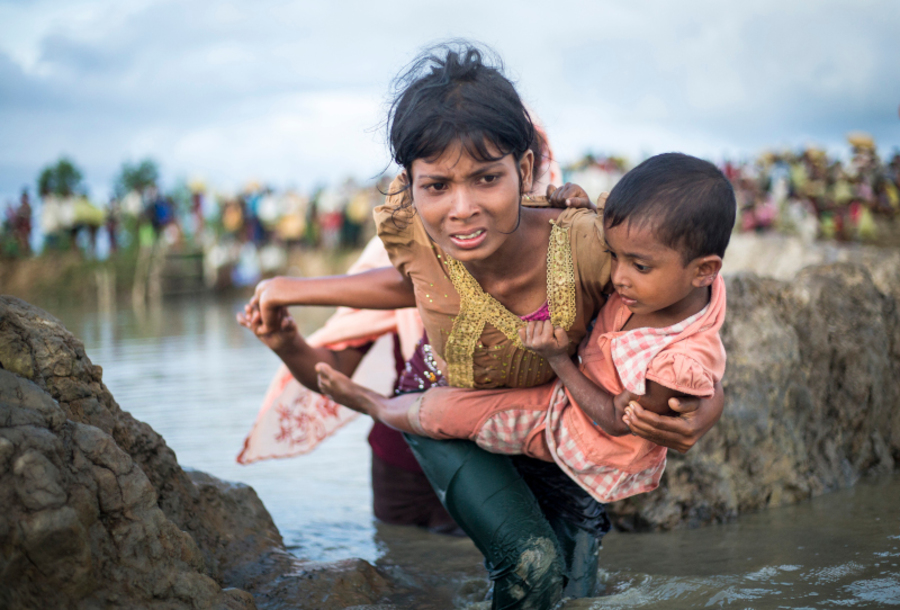Exhibitions
Index / Activities / Exhibitions / Stateless: The labyrinth of the invisible
Stateless: The labyrinth of the invisible
From April 25, 2019 until May 05, 2019From Monday to Saturday, 11:00 a.m. to 7:30 p.m. Sundays and holidays from 11:00 a.m. to 3:00 p.m.
MADRID
Casa Árabe Hall of Columns (at Calle Alcalá, 62, Basement Level).
From Monday to Saturday, 11:00 a.m. to 7:30 p.m. Sundays and holidays from 11:00 a.m. to 3:00 p.m.
Free entry until the event’s capacity is reached.
From April 25 through May 5, Casa Árabe is hosting this exhibition in
Madrid. It was produced by the United Nations High Commissioner for
Refugees (UNHCR) and the Spanish International Development Cooperation
Agency (AECID).
The exhibition uses a nearly maze-like exhibition layout to show the stolen identities of some of the stateless minorities existing in the world.
As Spain recently joined the Convention on the Reduction of Statelessness of 1961, and within the context of the UNHCR campaign #IBelong - #YoPertenezco, this photo exhibition is an attempt to increase the visibility of ten million women, men and children around the world who are not acknowledged as citizens of any country, in accordance with their laws.
Because they are undocumented, the stateless are legally invisible, condemned to live an existence in the shadows, dispossessed of the basic human rights enjoyed by any other citizen: education, health care, housing, legal work, the right to vote, freedom of movement and even the right to get married or receive a dignified burial or death certificate when they die. Many pass this stateless status on to their children, as if it were a sort of curse, and they in turn pass it on to the following generation.
The main reason why people become stateless is discrimination based on ethnic origin, religion or gender, because in certain countries women are unable to pass their nationality on to their children. The causes of statelessness vary by country, but the effects are always the same: isolation, poverty and exclusion. Statelessness creates a gap between the local community and the affected groups, increasing the sensation that they are intruders in their own land: they seem to belong nowhere. If not dealt with, long-term exclusion of stateless minorities can lead to resentment, fear and, in certain cases, persecution, displacement, instability and insecurity.
UNHCR MANDATE WITH THE STATELESS
In 1974, the United Nations General Assembly charged the UNHCR with the mandate to protect the interests of stateless persons, and since then the entity has worked to prevent and reduce the phenomenon, in such ways as by promoting the signing of conventions on statelessness, advising governments on legal reforms concerning nationality, improving the collection of information on the stateless population, supporting nationalization campaigns and advising the stateless on how to obtain nationality and acquire documents.
SPAIN’S COMMITMENT TO THE STATELESS
Spain joined the1961 Convention on the Reduction of Statelessness on September 25, 2018, and it is also a signatory of the 1954 Convention on Statelessness. Spain is among the few countries in the world which provides a process to determine statelessness status (established in 2001), and it has legislation designed to prevent the appearance of new cases of statelessness. In the last five years, Spanish authorities have received an average of 1,300 applications from stateless persons each year.
As Spain recently joined the Convention on the Reduction of Statelessness of 1961, and within the context of the UNHCR campaign #IBelong - #YoPertenezco, this photo exhibition is an attempt to increase the visibility of ten million women, men and children around the world who are not acknowledged as citizens of any country, in accordance with their laws.
Because they are undocumented, the stateless are legally invisible, condemned to live an existence in the shadows, dispossessed of the basic human rights enjoyed by any other citizen: education, health care, housing, legal work, the right to vote, freedom of movement and even the right to get married or receive a dignified burial or death certificate when they die. Many pass this stateless status on to their children, as if it were a sort of curse, and they in turn pass it on to the following generation.
The main reason why people become stateless is discrimination based on ethnic origin, religion or gender, because in certain countries women are unable to pass their nationality on to their children. The causes of statelessness vary by country, but the effects are always the same: isolation, poverty and exclusion. Statelessness creates a gap between the local community and the affected groups, increasing the sensation that they are intruders in their own land: they seem to belong nowhere. If not dealt with, long-term exclusion of stateless minorities can lead to resentment, fear and, in certain cases, persecution, displacement, instability and insecurity.
UNHCR MANDATE WITH THE STATELESS
In 1974, the United Nations General Assembly charged the UNHCR with the mandate to protect the interests of stateless persons, and since then the entity has worked to prevent and reduce the phenomenon, in such ways as by promoting the signing of conventions on statelessness, advising governments on legal reforms concerning nationality, improving the collection of information on the stateless population, supporting nationalization campaigns and advising the stateless on how to obtain nationality and acquire documents.
SPAIN’S COMMITMENT TO THE STATELESS
Spain joined the1961 Convention on the Reduction of Statelessness on September 25, 2018, and it is also a signatory of the 1954 Convention on Statelessness. Spain is among the few countries in the world which provides a process to determine statelessness status (established in 2001), and it has legislation designed to prevent the appearance of new cases of statelessness. In the last five years, Spanish authorities have received an average of 1,300 applications from stateless persons each year.

